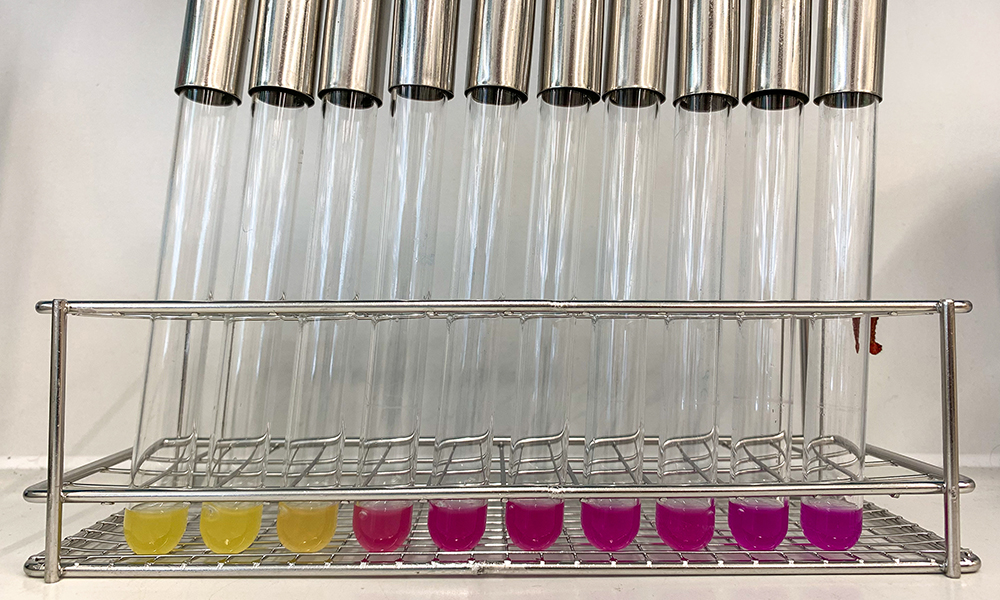
Colourful test tubes

Colour reactions – experiments involving chemicals that change their colour depending on the presence of another substance – have been a standard tool in biochemistry for centuries. A common example is the detection of starch using iodine solution, which turns a starch solution dark blue or black.
Stefan Bassler and Florian Huber in the Typas Group at EMBL Heidelberg took an existing biochemical assay that had previously been used to study bacteria growing on agar plates and applied it to measure the effect of drugs on bacteria in liquid culture – using a colour reaction. This image shows samples of the assay.
Gram-negative bacteria are surrounded by an inner and an outer membrane, together known as the bacterial envelope. This protects the cell’s contents, allows the entry of nutrients and other substances that the bacteria need to grow and survive, and keeps potentially damaging chemicals outside.
One approach to tackle bacterial infections in humans or animals is to disrupt the integrity of the bacterial envelope with antibiotics. This causes the bacterial cells to become leaky and prevents them from performing certain biochemical reactions, ultimately leading to their death.
Scientists in the Typas Group study the development of antimicrobial resistances and the effects that commonly used drugs have on the bacteria that live in and on our bodies – our microbiomes. To quickly identify those drugs that disrupt bacterial envelope integrity, Stefan and Florian used a molecule called chlorophenyl red-β-D-galactopyranoside (CPRG).
CPRG is yellow and can’t enter bacteria that have an intact envelope. When the envelope has been damaged by the addition of a drug to the growth medium, CPRG can get inside the bacteria, where it is processed by a bacterial enzyme. This reaction releases chlorophenyl red and turns the growth medium red. The deeper the colour, the stronger the disruptive effect of the drug on the bacterial envelope.
Credit: Stefan Bassler/EMBL
If you have a stunning picture of your science, your lab or your site, you can submit it here.


